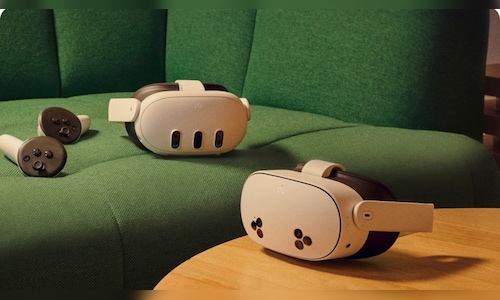Originally reported by UploadVR, this initiative could represent Meta’s most ambitious move yet toward mainstream AR, moving away from both its existing Quest headsets and the Ray-Ban Meta smart glasses currently available.
Weighing in at only 110 grams, the Puffin headset is expected to mimic a chunky pair of eyeglasses—significantly lighter than the Meta Quest models. To achieve this design, Meta is likely planning to relocate essential components such as the processor and battery to a compact, external “compute puck” that users can conveniently carry in their pockets.
The headset will operate on HorizonOS, the same software that runs the Quest devices; however, it will reportedly emphasize productivity and entertainment rather than immersive gaming.
Notably, Puffin will not include handheld controllers. Instead, it’s expected to use eye tracking and hand gestures for navigation—an interface choice that reflects Meta’s aim to make the mixed-reality experience more seamless and intuitive.
The report also indicates that Meta has put aside its previously speculated Quest 4 headsets, codenamed “Pismo Low” and “Pismo High,” which were intended to provide both standard and premium options. This decision comes after the company’s earlier cancellation of the high-end “La Jolla” headset, initially targeted for a 2027 launch.
With no new Quest headset on the immediate horizon, the Puffin may emerge as Meta’s flagship MR device as the decade progresses.
Puffin vs Ray-Ban Meta Smart Glasses
While both Puffin and the Ray-Ban Meta smart glasses aim to merge digital and physical experiences, their purposes—and functionalities—are strikingly different.
The Ray-Ban glasses, jointly developed with EssilorLuxottica, function as camera-equipped eyewear with open-ear audio, primarily designed for hands-free photography, videography, and voice-assisted features via Meta AI. They lack visual displays and prioritize convenience and style over immersive engagement.
In contrast, Puffin appears tailored for a more in-depth mixed-reality experience with integrated displays and spatial computing features. With HorizonOS installed, users could utilize productivity applications, video conferencing, and immersive media within a significantly advanced interface—albeit one likely bulkier and less fashion-forward than a pair of Ray-Bans.
What’s next
As reported by UploadVR, Meta is still evaluating display options and has yet to finalize the hardware specifications. However, if Puffin remains on schedule, it may launch before Apple’s rumored consumer-friendly Vision headset, marking Meta’s next significant advancement in spatial computing.



